About Wolves
What are the subspecies of the gray wolf?
The gray wolf, Canis lupus, lives in the northern latitudes around the world. There are five subspecies of the gray wolf in North America and seven to 12 in Eurasia. The currently recognized subspecies in North America are:
- Canis lupus baileyi, commonly referred to as the Mexican wolf or lobo.
- Canis lupus nubilus, referred to as the Great Plains or buffalo wolf.
- Canis lupus occidentalis, known as the Rocky Mountain wolf or Mackenzie Valley wolf.
- Canis lupus lycaon, commonly referred to as the eastern timber wolf.
- Canis lupus arctos, known as the arctic wolf.
Subspecies are often difficult to distinguish from one another. This is because they interbreed where their ranges overlap so that their populations tend to blend together rather than form distinctive boundaries. The different traits we see in subspecies are likely the result of geographic range, available habitat, and prey base. Skull dimensions, overall size, fur color, and the length of appendages are some of the characteristics that differ between subspecies of gray wolf.
In addition to gray wolves there are two other species of wolf in the world. The red wolf, Canis rufus, inhabits the southeastern United States and the newly recognized Abyssinian wolf, Canis simensis, lives on the highlands of Ethiopia.
How much do wolves weigh?
Adult female wolves in northern Minnesota weigh between 50 and 85 pounds, and adult males between 70 and 110 pounds. Wolves are larger in the northwestern United States, Canada, and Alaska where adult males weigh 85 to 115 pounds and occasionally reach 130 pounds. Females are usually 10 to 15 pounds lighter than males.
What do wolves eat?
Wild wolves prey primarily on large, hoofed mammals such as white-tailed deer, mule deer, moose, elk, caribou, bison, Dall sheep, musk oxen, and mountain goat. Medium sized mammals, such as beaver and snowshoe hare, can be an important secondary food source. Occasional wolves will prey on birds or small mammals. At Big Run we feed our wolves a mix of raw chicken, beef and (during the winter months) road-kill deer.
How much do wolves eat?
Wolves can survive on about two and a half pounds of food per wolf per day, but they require about five pounds per wolf per day to reproduce successfully. The most a wolf can eat in one sitting is about 22.5 pounds.
How long do wolves live?
Wolves in the wild have an average life span of six to eight years, but wolves have been known to live up to 13 years in the wild and 16 years in captivity.
What do wolves die from?
The natural causes of wolf mortality are primarily starvation, which kills mostly pups, and death from other wolves because of territory fights. While not usually a big problem, disease such as mange and canine parvovirus can be a concern in small and recovering populations. Injuries caused by prey results in some deaths. Human-caused mortality including legal, illegal, and accidental causes, can be high in some populations.
How strong are wolves jaws?
The massive molars and powerful jaws of a wolf are used to crush the bones of its prey. The biting capacity of a wolf is 1,500 pounds of pressure per square inch. The strength of a wolf’s jaws makes it possible to bite through a moose femur in six to eight bites. In comparison, a German shepherd has a biting pressure of 750 pounds per square inch. A human has a much lower biting pressure of 300 pounds per square inch.
How fast can wolves run?
Wolves will travel for long distances by trotting at about five miles per hour. They can run at speeds of 25 to 35 miles per hour for short bursts while chasing prey.
How far can wolves travel?
Wolves may travel 10 to 30 miles each day in search of food. Dispersing wolves, those leaving packs in search of their own mate, have been known to travel distances of 550 miles away form their home territory.
Wolves on the Web
Other Animal Information
Thanks to writer Al Smuskiewicz, who volunteered his time to research and compose all the articles about our various animals.
The Black Bear



The black bear (Ursus americanus) is the most common and widespread species of bear in North America. It is also the smallest of the three North American bear species.
North American Bears
Besides the black bear, the two other members of the bear family (Ursidae) that live in North America are the brown bear and polar bear. Various subspecies of brown bear (Ursus arctos)—some known as grizzly bears—live in the Rocky Mountains of the United States, western Canada, Alaska, Europe, and Asia. The polar bear (Ursus maritimus) lives throughout the Arctic.
Where Black Bears Live
Black bears live throughout Canada and Alaska and in at least 40 of the conterminous United States (the lower 48 states), including southern Illinois and northern Wisconsin and Michigan. The animals are less common in eastern and midwestern states than in western states. Black bears are rare in Mexico.
Black bear habitats include forests, swamps, and mountains. Within these habitats, black bears find shelter in dens under fallen trees, in hollow logs, in dense thickets of shrubs, and in caves.
The Black Bear’s Body
An adult black bear is usually five to six feet long from head to tail, and two to three feet high at the shoulders. Black bears typically weigh from 200 pounds to more than 500 pounds, with males (boars) weighing more than females (sows).
Black bears have feet that are plantigrade, meaning that they walk with both the heel and toes touching the ground. These are the same kind of feet that humans have—and black bears can stand and walk upright like humans for short distances. The claws on black bear feet are short, curved, and sharp.
Black bears are mostly black in the eastern part of their range. However, many black bears are cinnamon brown in the western part of their range, and some are even creamy white (along the coast of British Columbia) or bluish-gray (in southeastern Alaska).
Food
Black bears have an omnivorous (eating both plant and animal food) diet. Most of a black bear’s food comes from plants, including berries and other fruits, acorns, nuts, and grasses. Black bears can easily climb trees to reach high food.
Animal food eaten by black bears includes worms, insects, birds’ eggs, rodents and other small mammals, salmon and other fish, and (rarely) young deer and moose. When chasing prey, a black bear can maintain a speed of 30 miles per hour for short distances. Black bears will also eat dead animals.
In national parks and national forests, some black bears have learned to accept handouts from human visitors and to raid campgrounds and dumpsters for food. It is a bad idea for people to feed bears, because some bear-human encounters have led to injuries and even death for the humans.
Behavior
Black bears are most active at dawn and dusk, though they are sometimes out and about at mid-day. They normally live alone—except for breeding pairs in summer, mother bears with cubs, and temporary groups in especially rich feeding areas. In such a group, bears may form a social hierarchy, with dominant and submissive animals of the same sex.
Male black bears have large home ranges (areas in which they normally live) that overlap the smaller home ranges of several females. Black bears mark their territories by clawing at and biting trees and by leaving their scents on plants and rocks.
When black bears meet, they communicate with a variety of body signals, facial expressions, and vocalizations. If a black bear feels threatened, it may flatten its ears, lower its head, extend its lips, and let out a low moan or blow. If this behavior doesn’t make the threat go away, the bear may lunge toward the threat—and, if necessary, attack. Black bears growl loudly while fighting.
Hibernation
During the autumn, black bears consume large amounts of food and put on extra weight. This is especially true in far northern areas, where winters are very long and cold. In these areas, black bears remain inside their dens for most of the winter, sleeping and living off their fat reserves for weeks or months at a time. Before emerging from its den in spring, a black bear may lose more than 25 percent of its body weight.
Despite these long sleeps, many scientists do not consider black bears to be true hibernators. That is because, unlike such true hibernators as bats and ground squirrels, black bears do not experience dramatic drops in body temperature during their winter dormancy. In fact, black bears can quickly become active again when they are disturbed or when there are warm-ups in the winter weather.
In the more southern parts of their range, where winters are mild, black bears may be inactive for only brief periods during winter.
Reproduction
Black bears usually breed in June or July. In January or February, the female black bear gives birth to one to six (usually two) cubs in her winter den. The tiny cubs each weigh only about half a pound and are blind and hairless. Their eyes open when they are about a month old.
The cubs stay with their mother for a whole year, learning to hunt and forage from her. Adult male black bears play no role in raising the young. The cubs den with their mother through a second winter. When spring arrives, the young bears go out on their own.
Black bears usually become sexually mature between the ages of two and four years. If their nutrition is poor, however, some females may not begin breeding until they are as old as seven or eight. After reaching sexual maturity, a female black bear typically gives birth every other year.
Lifespan
Most black bears are full grown by the time they are about four years old, though some males may continue growing past age 10. Some black bears live more than 30 years in the wild, but most die at an earlier age. Many deaths of black bears are caused by gunshot wounds, traps, and automobiles.
Intelligence
Black bears are intelligent animals with large brains. Experiments have demonstrated that black bears have excellent long-term memories. Biologists have also observed that black bears are extremely curious about their surroundings and any new objects that they find. Black bears are easily trained for performances in movies and other forms of entertainment.
Black bears have amazing navigational abilities that are little understood by scientists. Some “nuisance” black bears (which got into such trouble as raiding garbage) have been trucked almost 170 miles away from their home ranges by wildlife managers—only to somehow find their way back.
Abundant Animals
Although black bears are not as abundant as they used to be in the eastern and midwestern states, these animals still exist in large numbers in nature. There are believed to be approximately 900,000 black bears in North America, including 300,000 in the United States. Hunting seasons in many states and Canadian provinces result in roughly 50,000 black bears being killed every year.
Article Written By: Alfred J. Smuskiewicz
MAIN SOURCES USED IN RESEARCH:
- World Book Online: Bear article, 2008
- David Burnie, Don E. Wilson, editors. Smithsonian Institution Animal. Dorling Kindersley Publishers, 2001
- Joseph A. Chapman, George A. Feldhamer, editors. Wild Mammals of North America. The Johns Hopkins University Press, 1982
- William H. Burt, Richard P. Grossenheider. A Field Guide to the Mammals. Houghton Mifflin Company, 1976
- http://ecos.fws.gov/speciesProfile/SpeciesReport.do?spcode=A0G1
- http://www.defenders.org/wildlife_and_habitat/wildlife/black_bear.php
- http://animaldiversity.ummz.umich.edu/site/accounts/information/Ursus_americanus.html
- http://www.iucnredlist.org/search/details/41687.pdf
- http://www.bear.org/Black/Black_Bear_Facts.html
- http://www.mass.gov/dfwele/dfw/wildlife/facts/mammals/bear/black_bear_biology_faq.htm
- http://www.bear.org/Black/Articles/Home_Sweet_Smelling_Home.html
- http://www.squidoo.com/blackbears
The Cougar
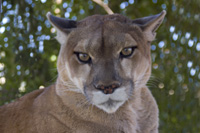
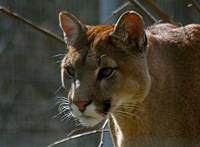
The cougar (Puma [or Felis] concolor) is a cat of many names. Mountain lion, panther, puma, painter, and catamount are some of the other names used to refer to this species.
Cougars and Other Cats
The cougar is the second largest member of the cat family (Felidae) in the Western Hemisphere. The only cat in the Americas that is larger is the jaguar, of Central and South America.
There are as many as 30, or as few as 6, subspecies of cougars—depending on the scientist doing the classifying. The name “panther” is commonly used to refer to a cougar subspecies in Florida. However, “panther” is also used to refer to the leopard (Panthera pardus), an entirely different species that lives in Asia and Africa. The “black panther” is a leopard with a genetic mutation that makes its skin and fur contain large amounts of a dark pigment called melanin.
Where Cougars Live
The cougar is the most widely distributed carnivore in the Western Hemisphere, living from southern Canada to southern South America. In the United States, it is found mostly in the western states, from the Rocky Mountains to California. Cougars live in a variety of habitats, including mountains, coniferous and deciduous forests, grasslands, deserts, and swamps.
The Cougar’s Body
The cougar’s body, not counting the tail, may be 6 feet in length. The tail adds another 2 to 3 feet to the animal’s length. Cougars have long muscular legs, which allow them to run as fast as 35 miles per hour and to leap as high as 18 feet. Cougars typically weigh between 110 and 200 pounds, with males being heavier than females.
The cougar’s coat is plain, with no spots or stripes—which is unusual for a wild cat. The animal’s fur color varies from tawny to reddish to silvery gray. Its throat and belly are white.
Food
The hunting strategy of the cougar usually consists of carefully stalking its prey under cover and then suddenly leaping out at it. The cougar grabs its prey with the sharp claws of its front paws and then bites the animal’s neck to break it. The prey is dragged to a sheltered spot, such as under a tree or rock overhang, where the cougar can eat it in peace.
The cougar’s diet includes both large and small animals, such as deer, bighorn sheep, elk, moose, wild hogs, rabbits, and mice. Cougars even eat porcupines—with the quills! Cougars often store uneaten food in caches, covered with dirt, to be eaten later.
Behavior
Cougars may hunt during the day or night, though they are most active around dusk and dawn. They tend to be solitary and secretive animals, except for mating time. They use thick brush, rocky crevices, or caves as shelter when they want to rest or protect themselves from bad weather.
The home range (the area in which an animal normally lives) of a cougar may be larger than 125 square miles. A cougar marks its territory with various kinds of signs to warn other cougars to stay out, such as scrapes in the dirt or snow, scratched logs, piles of leaves, and urine and feces. However, the large home range of a male may overlap the smaller homes ranges of several females.
Vocalizations
Unlike most other large wild cats, the cougar does not roar. But it does growl, whistle, hiss, and purr. In addition, females ready to mate sometimes make a loud eerie cry that resembles the sound of a person screaming.
Reproduction
Cougars may breed at any time of the year. A male typically mates with several females during the year. A female typically mates once every two to three years.
Approximately 90 days after mating, the female gives birth to one to six (usually two or three) kittens in a secluded den among rocks, in a thicket, or in some other sheltered place. The kittens weigh only about one pound at birth and have their eyes and ears closed until they are one or two weeks old. Kittens nurse for five or six weeks before they can eat solid food.
Cougar kittens have light-colored fur with large brownish-blackish spots, which fade away by the time the cat is six months old. The mother cougar may take care of her offspring for as long as two years, teaching them to hunt and to defend themselves. Male cougars play no role in caring for offspring, and they may even kill their own kittens should they come across them. Cougars are able to breed when they are two or three years old.
Lifespan
Cougars usually live between 12 and 20 years. There are no predators that attack cougars. However, cougars are sometimes killed in struggles with large prey. For example, an elk might kill a cougar with its antlers or hooves. The main threats to cougar survival come from harmful human activities.
Cougar Populations in the United States
Cougars have been eliminated from roughly two-thirds of their historic range in North America, mainly as a result of habitat destruction, hunting, and killings by automobiles. These large cats once roamed throughout the United States, from the east coast to the west coast. Today, however, they remain relatively common in only the Rocky Mountains region and the states west of these mountains. Since the 1960’s, when many western states instituted hunting restrictions and eliminated bounties on cougars, the populations of cougars in this region have been increasing.
There are no known breeding populations of cougars in the states east of the Rocky Mountains—except for southern Florida, where approximately 60 members of the Florida panther subspecies (Puma concolor coryi) live. The survival of this highly endangered subspecies is at risk because of destruction of its habitat by human development and contamination of its habitat by agricultural and residential pesticides. Inbreeding, which makes animals more susceptible to disease, also places the Florida panther’s survival at risk.
In recent years, there have been scattered sightings of individual cougars in a number of states in the southeastern and midwestern regions of the United States, including southern and western Illinois. Scientists believe that these sightings may be evidence that cougars are beginning to naturally re-establish themselves in these areas.
Article Written By: Alfred J. Smuskiewicz
MAIN SOURCES USED IN RESEARCH:
- World Book Online: Cougar, Panther articles, 2008.
- David Burnie, Don E. Wilson, editors. Smithsonian Institution Animal. Dorling Kindersley Publishers, 2001.
- Joseph A. Chapman, George A. Feldhamer, editors. Wild Mammals of North America. The Johns Hopkins University Press, 1982.
- William H. Burt, Richard P. Grossenheider. A Field Guide to the Mammals. Houghton Mifflin Company, 1976.
- http://www.nwf.org/cats/pdfs/catsreport.pdf
- http://ecos.fws.gov/speciesProfile/SpeciesReport.do?spcode=A046
- http://www.easterncougarnet.org/cougarfacts.html
- http://www.easterncougarnet.org/bigpicture.html
- http://www.easterncougarnet.org/prairiestates.html
- http://www.bigcatrescue.org/cats/wild/cougar.htm
- http://www.nwf.org/cats/pdfs/cougarfacts.pdf
- http://www.nwf.org/cats/pdfs/flpantherfacts.pdf
- http://www.sandiegozoo.org/animalbytes/t-puma.html
Horses & Ponies
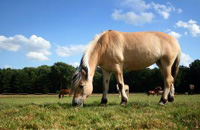
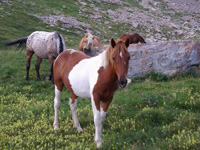
People around the world have used horses (Equus caballus) for thousands of years for farming, ranching, hunting, transportation, sport, and war—and even for simple companionship. “Pony” is a name used for certain types of small horses. Since the development of railroads, automobiles, tractors, and other machinery, horses are not as widely used for work as they once were. Yet, these beautiful animals remain among our most beloved creatures.
Horse Breeds
There are more than 150 breeds of horses and ponies—each one carefully produced by people through selective breeding to have particular, desirable traits. The breeds at Big Run Wolf Ranch include a miniature horse and a Welsh pony. All horse breeds are classified into three main groups: heavy horses, light horses, and ponies.
Heavy horses are the largest horses, with large bones and thick legs. Some weigh more than 2,000 pounds. Light horses are smaller horses, with small bones and thin legs. Most weigh less than 1,300 pounds. Ponies are also small horses, usually less than 800 pounds and shorter than 58 inches from ground to withers (the ridge between the shoulder blades). Many ponies have short, stout legs.
Heavy Horses
Heavy horses are the strongest types of horses. Draft horses are heavy horses that were once commonly used to pull plows across farms and wagons filled with heavy freight. The largest draft horse breed is the shire, which may stand more than 68 inches high. Other draft horse breeds include the Clydesdale (famous for the long hair at the bottom of its legs), the Belgian, and the Suffolk.
Coach horses are somewhat smaller than draft horses. They were also once commonly used for farm work and pulling heavy wagons. Coach horse breeds include the German coach, French coach, and Cleveland bay.
Light Horses
Light horses known as saddle horses include breeds that are often used for riding, racing, performances in horse shows, and hunting. The quarter horse is a saddle horse used by cowboys and cowgirls for herding cattle and other ranch work. This breed is also the fastest racehorse, able to run a quarter mile in about 20 seconds. The thoroughbred is a high-spirited breed used for racing, jumping, and hunting. Other saddle horses include Lipizzaners (famous performing horses), the Tennessee walking horse, the Morgan, and the Arabian.
Many kinds of light horses are more often classified by their color patterns than by their breeds. For example, palominos are light horses with a golden/blond coat and a golden or silvery mane or tail. Appaloosas usually have a whitish area on the loin and hips with small dark “raindrop” spots.
Miniature Horses
Some people classify miniature horses as light horses, other people classify them as ponies. A miniature horse is usually less than 34 to 38 inches in height. Some “dwarf” miniature horses are less than 20 inches high. Miniature horses are friendly animals that are valued as family pets and horse show performers. Some are even used by blind people as guide animals—just like guide “seeing-eye” dogs. Miniature horses (and ponies) typically live longer than larger horses.
Ponies
Most ponies are gentle, easily trained animals that can be used for riding and for pulling or carrying light loads. Pony breeds include the Welsh, Shetland, Hackney, and Connemara.
The Welsh pony was originally bred in Wales to work in the narrow tunnels of coal mines and to herd sheep over hilly farmland. Most Welsh ponies are less than 57 inches in height. Welsh ponies are intelligent, friendly, and athletic. The are easy for children to ride. They are also excellent jumpers at horse shows. Welsh ponies are hardy animals that feel right at home in both cold and hot climates.
The Welsh pony at Big Run Wolf ranch is a gelding—meaning a male that has had its reproductive glands removed to prevent it from breeding.
Wild Horses
In addition to the many breeds of domestic horses, there are also some horses that live in the wild. The only remaining truly wild horse is the Przewalski horse (Equus przewalskii) of Central Asia. This horse is an endangered species.
Horses that live in the wild in the western United States—animals that are sometimes called mustangs—are descendants of tame horses that escaped from Spanish colonists, Native Americans, and other people hundreds of years ago.
The Horse’s Body
Although horses vary greatly in body size, shape, and color, there are certain things that most horses have in common. Their legs end in hooves that are strong, hard, and curved. A hoof is actually a cover at the tip of a single toe. Two other “toes” grow as bony strips on the sides of the leg. The horse’s “heel” bone (called the “hock”) is actually halfway up the leg. A horse uses its strong legs and hard hooves to kick and protect itself.
You can tell how old a horse is by looking at its teeth. Foals (baby horses) are usually born with no teeth. A four-month-old horse has four upper and four lower teeth. A one-year-old horse, has six upper and six lower teeth. When a horse is five years old, it has a full set of 36 teeth if it is a mare (female) and 40 teeth if it is a stallion (male). As a horse ages, the teeth become increasingly worn down from eating.
Have you ever seen a horse twitch? Horses have special muscles in their bodies that can twitch to help them shake off insects.
Breeders, trainers, and handlers measure the body of a horse in units called hands. One hand equals four inches.
Horse Senses
Horses have excellent senses of vision, hearing, and smell. They have larger eyes than any other land animal, except for ostriches. A horse can look forward with one of its eyes and backwards with the other. However, because its eyes are on the sides of its head, a horse has to turn its head to see directly in front.
Horses move their ears around to help them pick up faint sounds coming from different directions. Horses’ large nostrils help them smell odors originating far away.
Horse Food
Horses eat only plant food, such as grass, hay, and oats. A horse typically needs to be fed about three times a day. A hard-working, medium-sized horse may eat 20 pounds of food per day. A horse living a life of leisure will eat less. A horse may drink about 10 gallons of water a day. Horses also need to be given blocks of salt to lick, because they lose a lot of body salt through sweating.
Horses—Young and Old
A foal is born after being carried in its mother’s womb for 10 to 14 months. Most mares will give birth to five or six foals throughout their lives.
Soon after being born, a foal can stand. Within a few hours, it can run. A colt (growing horse) typically reaches full size by the time it is five years old. Mares may be used to breed in as early as three years. Stallions are usually first bred around the age of four years.
Horses typically live to be about 20 to 30 years old.
Horse History
Fossils lead most scientists to believe that all horses are descended from a small horselike animal that lived about 55 million years ago. This prehistoric animal, called Eohippus or Hyracotherium, was only 10 to 20 inches high. Fossils indicate that by 3 million years ago, wild horses had evolved to have the basic size and appearance of modern horses. People domesticated horses sometime before 5,000 years ago.
There were no horses in the Western Hemisphere when Europeans first arrived in the late 1400’s. When Christopher Columbus and the other early explorers from Spain brought horses with them to the Americas, it was the first time that Native Americans had ever seen a horse. However, they soon became expert horsemen. In the 1700’s and 1800’s, horses were crucial to the settlement of the United States by the pioneers.
Article Written By: Alfred J. Smuskiewicz
MAIN SOURCES USED IN RESEARCH:
- World Book Online: Horse article, 2008.
- David Burnie, Don E. Wilson, editors. Smithsonian Institution Animal. Dorling Kindersley Publishers, 2001.
- Ronald M. Novak, John L. Paradiso. Walker’s Mammals of the World, 4th ed. Johns Hopkins University Press, 1983.
- http://www.ultimatehorsesite.com
- http://www.welshpony.org/
- http://www.heavenlypony.com/
- http://www.amha.org/
- http://www.theminiaturehorse.com/
- http://www.guidehorse.org/faq_horses.htm
- http://news.nationalgeographic.com/news/2001/10/1024_TVmustangs.htm
The Decline and Recovery of the Wolf
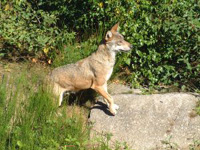
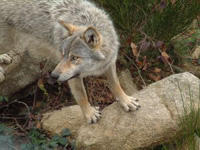
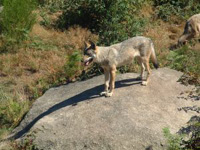
By Alfred J. Smuskiewicz
January 2008
The gray wolf (Canis lupus) was once the most widespread carnivorous mammal in the world. Able to live in almost any kind of climate, wolves roamed the forests, grasslands, mountains, and tundra throughout the Northern Hemisphere. North America, Europe, and Asia were all home to large numbers of wild, free-ranging wolf packs.
Wolves and humans have always had a close but complex relationship. Wolf packs had similar habits to—and lived in similar habitats as—tribes of prehistoric people. The frequent encounters between wolves and humans led to the domestication of wolves approximately 14,000 years ago. All of the dogs living as pets with people today—from the tiny chihuahua to the mighty mastiff—are descendents of the wolf.
The relationship between wolves and humans turned ugly as wandering hunter-gatherer tribes developed into the first permanent agriculture-based settlements. Wherever large numbers of people settled, they killed wolves—sometimes to protect livestock, other times simply out of fear. As a result, wolf populations declined dramatically over the centuries. Today, in most of the wolf’s formerly enormous range, only sparse wild populations remain.
North American Wolf Populations
Before European settlers spread across North America in the 1700’s and 1800’s, wolves were common throughout the continent, from Canada to Mexico and from the coast of the Atlantic Ocean to that of the Pacific Ocean. In the United States, wolves were brought to the brink of extinction through government poisoning programs, bounties offered for the deaths of wolves, and private predator-extermination efforts.
By the mid-1900’s, there were few wolves left in the conterminous United States (the lower 48 states). These remnant animals consisted of several hundred gray wolves in northern Minnesota, an isolated population of grays on Michigan’s Isle Royale, and a small number of grays in the Southwest. In addition, a few red wolves, which are smaller than the typical gray wolf, lived along the Gulf coasts of Texas and Louisiana. Most biologists consider the red wolf, Canis rufus, to be a separate species from the gray wolf. Large numbers of North American gray wolves remained only in Alaska and Canada.
By the 1960’s, many conservationists sounded the alarm about the disappearance of this magnificent animal. Dedicated conservation efforts came to the rescue of wolves in the United States with the 1973 Endangered Species Act, which was designed to protect many declining species from extinction. Between 1973 and 1976, the United States Fish and Wildlife Service (USFWS) placed various subspecies of gray wolves on the Endangered Species List (ESL), thereby protecting these wolf populations from hunting, trapping, and other activities harmful to them or their habitats. In 1978, the entire gray wolf species was placed on the ESL. The red wolf was also listed on the ESL.
Thanks to the protection of the Endangered Species Act, wolf numbers have rebounded in the United States. With their protected status, some wolves from natural populations in Canada have been able to migrate across the border to the United States. Other wolves have been restored to natural habitats in the United States through special recovery programs, in which government agencies (including the USFWS), universities, and conservation organizations work together to release animals into certain wild areas as “experimental populations.” These animals are relocated to these areas from other wild places in which they are relatively abundant or from captive-bred populations.
Today, more than 5,000 gray wolves live in the wild in the lower 48 states. The major populations of grays are in three regions—the Western Great Lakes region, the Northern Rocky Mountains region, and the Southwest region.
The Western Great Lakes Region
According to the USFWS, the known numbers of gray wolves in the Western Great Lakes region as of 2006 (the latest-available data as of January 2008) were as follows:
- 434 individuals in the Upper Peninsula of Michigan
- 30 individuals in 3 packs on Isle Royale in Michigan
- 3,020 individuals in 485 packs in Minnesota
- 465 individuals in 115 packs in Wisconsin
Wolf numbers in the Western Great Lakes region have increased naturally by the spread of the remnant population from northern Minnesota and from populations in Canada. In fact, wolf numbers in this region have increased to the point where the USFWS now considers these animals to be secure, functioning, self-sustaining members of the ecosystem. Thus, the USFWS removed the wolves of the Western Great Lakes region from the ESL in March 2007. The USFWS credited the wolf recovery to decades of cooperative work by conservation groups, Native American tribes, and state and federal government agencies.
The “delisting” removed federal protection for wolves in this region—including not only Michigan, Minnesota, and Wisconsin, but also nearby areas into which the wolves might eventually disperse (parts of North Dakota, South Dakota, Iowa, Illinois, Indiana, and Ohio). These states are now allowed to establish possible hunting and trapping seasons for wolves, provided that such activities do not threaten the survival of the animals.
The state departments of natural resources in Michigan, Minnesota, and Wisconsin, as well as local Native American tribes, are now in charge of the long-term management of wolf populations in the Western Great Lakes region. However, the USFWS plans to monitor the region’s wolf populations for several years to ensure that they do not slide back toward becoming endangered. The USFWS reserves the option of relisting the wolves on the ESL should their numbers fall too low again.
The Northern Rocky Mountains Region
The known numbers of gray wolves in the Northern Rocky Mountains region as of 2006 were as follows:
- 159 individuals, including 13 breeding pairs, in northwest Montana
- 713 individuals, including 46 breeding pairs, in central Idaho
- 371 individuals, including 30 breeding pairs, in the Yellowstone ecosystem of Montana, Idaho, and Wyoming
The wolves in northwest Montana migrated there naturally from Canada. To speed up the natural recovery process in this region, a USFWS-led recovery program relocated 66 wolves from Canada into Yellowstone National Park and central Idaho in 1995 and 1996 as experimental populations. The wolves at Yellowstone today are the descendents of those animals.
In light of updated estimates of approximately 1,500 wolves in the Northern Rocky Mountains region, the USFWS was expected to remove the wolves of this region from the ESL in early 2008. This move would leave wolf population management in the hands of state authorities in Montana, Idaho, and Wyoming. As with the Western Great Lakes region, delisting would allow the wolves of the Northern Rocky Mountains region to be hunted and trapped, with the goal of maintaining enough animals for a self-sustaining population.
The proposed delisting of wolves in this region was controversial, because many conservationists believed that there needed to be at least 2,000 wolves in a viable, self-sustaining population.
The Southwest Region
The known numbers of Mexican gray wolves (a subspecies of the gray wolf) in the Southwest region as of 2006 were as follows:
- 59 individuals, including 7 breeding pairs, in Arizona and New Mexico
The Mexican gray wolves of the Southwest region are an experimental population that is part of a joint recovery program involving both the USFWS and the government of Mexico. Previous to the wild reintroduction of wolves from a captive-bred stock in this program, the last confirmed wild Mexican gray wolf was seen in the United States in 1970, and in Mexico in 1980.
To obtain Mexican gray wolves for captive breeding, conservation officials captured the few remaining wolves in Mexico between 1977 and 1980. These animals were then bred in captivity to build up their numbers. In the 1990’s, officials began to move some captive-bred wolves to remote wildlife facilities, including the Sevilleta National Wildlife Refuge in New Mexico, to prepare them for living in the wild and hunting on their own.
In 1998, the USFWS released 13 of these wolves into Apache-Sitgreaves National Forest in eastern Arizona. Since then, there have been additional releases of wolves in this national forest and in Gila National Forest in New Mexico. In addition, released wolves have given birth to a number of pups in the wild. The goal of the USFWS is to establish a wild population of at least 100 Mexican gray wolves. The recovery program houses approximately 300 wolves in captivity.
Unfortunately, the Mexican gray wolf recovery program has been plagued by a number of problems, including cases of wolves roaming outside the reintroduction area and attacking livestock on ranches. As a result, officials were forced to kill several wolves. Furthermore, more than 20 wolves have been shot and killed illegally. In early 2008, the USFWS was reportedly re-evaluating the program.
Gray Wolves in Alaska and Canada
Unlike wolf populations in the lower 48 states, the populations of gray wolves in Alaska and Canada have never reached the point at which special protection as members of an endangered species was deemed necessary. Thus, the wolves in these regions are not on the ESL.
In Alaska, the state government manages a population of approximately 6,000 to 8,000 gray wolves. In Canada, provincial governments manage a total population of roughly 50,000 to 60,000 gray wolves.
Because wolves in Alaska and Canada are not considered to be endangered or threatened, they are commonly trapped for the fur market.
Red Wolves
The red wolf is one of the most endangered wild canids (members of the dog family). The red wolf was formerly found throughout the Southeast United States and up the eastern seaboard to New England. By 1980, wild populations of red wolves had been eradicated, and only 14 survived in captivity.
As part of a captive-breeding program involving the USFWS and nearly 40 wildlife facilities in the United States, red wolves began to be reintroduced into the wild in 1987. An experimental population of red wolves was established at the Alligator River National Wildlife Refuge in North Carolina and nearby lands in northeast North Carolina. As of 2006, there were approximately 100 red wolves in 20 packs roaming the wilds of northeast North Carolina, along with about 170 in captivity.
The USFWS’s goal is to build up red wolf numbers to about 550, including at least 220 in the wild. A big problem with increasing the wild numbers, however, is that red wolves have a tendency to interbreed with coyotes, producing hybrid animals rather than pure red wolves.
Wolves in Europe and Asia
The gray wolf survives not only in North America, but also in parts of Europe and Asia. Several Eurasian subspecies of the gray wolf once lived throughout northern Europe and Asia and south into India and the Arabian Peninsula. According to the International Union for Conservation of Nature and Natural Resources (IUCN), the original worldwide range of Canis lupus has been reduced by about one-third. Nevertheless, because the gray wolf survives in a relatively widespread range around the world and its numbers are trending upward, the IUCN classifies the status of the gray wolf as being of “least concern.”
Wild populations of Eurasian gray wolves are most common in central Asia, including Russia, Kazakhstan, and other parts of the former Soviet Union (where there are more than 90,000 wolves) and Mongolia (where there are more than 10,000 wolves). Thousands of wolves are reportedly killed every year in Russia for the fur trade and as a result of conflicts with people, such as attacks on livestock. In China, wolves are widely persecuted and threatened by habitat loss, hunting, trapping, and poisoning.
Small numbers of gray wolves can be found in parts of Western and Eastern Europe, including Spain, France, Germany, Scandinavia, Italy, Greece, Poland, Romania, and Croatia. As in the United States, government protection since the 1970’s, including official protection by the European Union, has allowed the previously decimated wolf populations of Europe to bounce back somewhat. In some European countries, the increased wolf numbers are being culled by bounties and hunting. There are also gray wolves in India and the Middle East (including Israel, Jordan, Syria, Egypt, and Iran).
A third species of wolf, Canis simensis, lives in the highlands of Ethiopia, in Africa. This species, commonly called the Abyssinian, or Ethiopian, wolf, consists of only about 400 to 500 individuals in isolated populations.
Coming Full Circle
The relationship between wolves and humans has come full circle. Wolves were once nearly exterminated in the wild by humans. Then they were rescued by conservation measures. Now, with their populations substantially recovered in certain areas, wolves in the United States are once again becoming subject to hunting and trapping.
This time, hopefully, we can trust our government institutions to keep the conservation of wild wolves at the core of their population management strategies. After all, there should be enough room in this world for both wolves and humans.
SOURCES USED IN RESEARCH:
- http://www.fws.gov/midwest/wolf/population/status-map.htm
- http://www.fws.gov/midwest/wolf/esa_status/index.htm
- http://www.fws.gov/midwest/wolf/2007delisting/index.htm
- http://www.fws.gov/home/feature/2007/gray_wolf_factsheet_populations.pdf
- http://www.fws.gov/home/feature/2007/gray_wolf_factsheet-region2.pdf
- http://www.fws.gov/mountain-prairie/species/mammals/wolf/Wolf_esa_status_12march07.pdf
- http://www.fws.gov/southwest/es/mexicanwolf/
- http://www.fws.gov/alligatorriver/redwolf.html
- http://ngm.nationalgeographic.com/ngm/data/2002/01/01/html/ft_20020101.1.html
- http://www.npr.org/templates/story/story.php?storyId=17910768
- http://www.yellowstoneinsider.com/index.php?contentID=924&articleID=99
- http://www.billingsgazette.net/articles/2008/01/04/news/state/32-hunts.txt
- http://www.iucnredlist.org/search/details.php/3746/all
- http://www.rferl.org/featuresarticle/2005/03/d314b92b-26f8-4d9f-9007-05979f7a291a.html
- http://www.npwrc.usgs.gov/resource/mammals/cowolf/wolf.htm
- http://www.ualberta.ca/~jzgurski/population.html
- http://www.wildnet.org/wolf.htm
- http://www.heartofthewolf.org/WolfFAQ.htm

